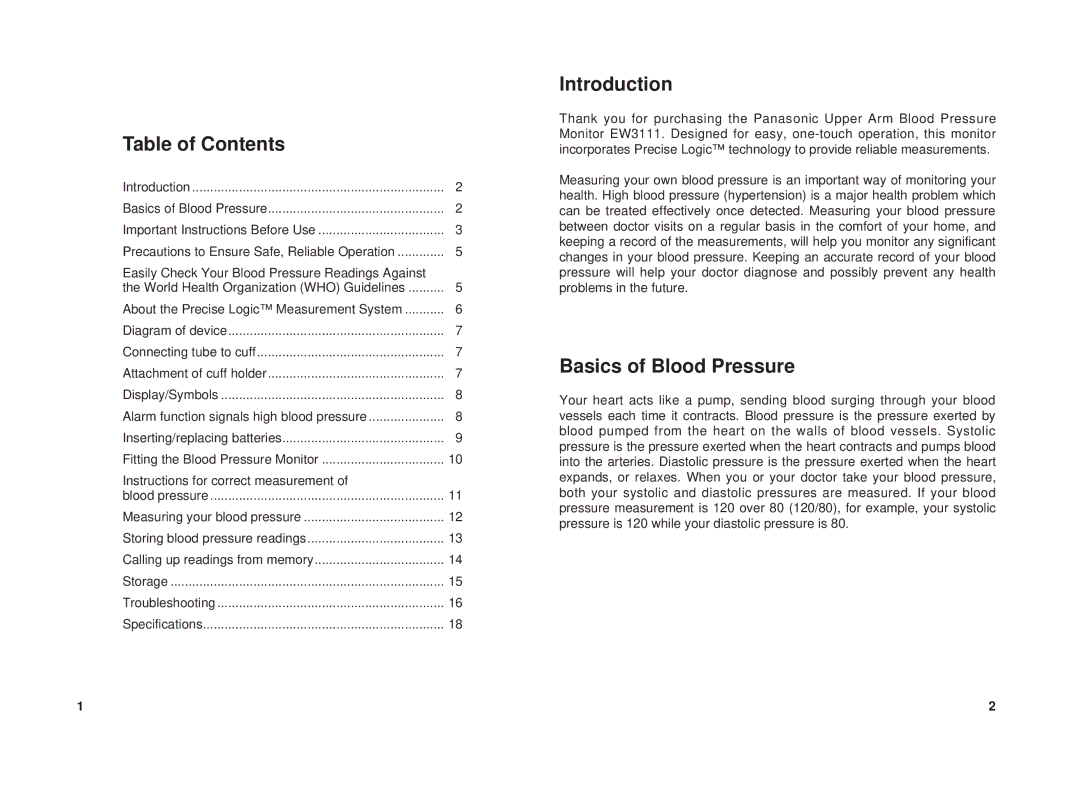
Table of Contents |
|
Introduction | 2 |
Basics of Blood Pressure | 2 |
Important Instructions Before Use | 3 |
Precautions to Ensure Safe, Reliable Operation | 5 |
Easily Check Your Blood Pressure Readings Against |
|
the World Health Organization (WHO) Guidelines | 5 |
About the Precise Logic™ Measurement System | 6 |
Diagram of device | 7 |
Connecting tube to cuff | 7 |
Attachment of cuff holder | 7 |
Display/Symbols | 8 |
Alarm function signals high blood pressure | 8 |
Inserting/replacing batteries | 9 |
Fitting the Blood Pressure Monitor | 10 |
Instructions for correct measurement of |
|
blood pressure | 11 |
Measuring your blood pressure | 12 |
Storing blood pressure readings | 13 |
Calling up readings from memory | 14 |
Storage | 15 |
Troubleshooting | 16 |
Specifications | 18 |
Introduction
Thank you for purchasing the Panasonic Upper Arm Blood Pressure Monitor EW3111. Designed for easy,
Measuring your own blood pressure is an important way of monitoring your health. High blood pressure (hypertension) is a major health problem which can be treated effectively once detected. Measuring your blood pressure between doctor visits on a regular basis in the comfort of your home, and keeping a record of the measurements, will help you monitor any significant changes in your blood pressure. Keeping an accurate record of your blood pressure will help your doctor diagnose and possibly prevent any health problems in the future.
Basics of Blood Pressure
Your heart acts like a pump, sending blood surging through your blood vessels each time it contracts. Blood pressure is the pressure exerted by blood pumped from the heart on the walls of blood vessels. Systolic pressure is the pressure exerted when the heart contracts and pumps blood into the arteries. Diastolic pressure is the pressure exerted when the heart expands, or relaxes. When you or your doctor take your blood pressure, both your systolic and diastolic pressures are measured. If your blood pressure measurement is 120 over 80 (120/80), for example, your systolic pressure is 120 while your diastolic pressure is 80.
1 | 2 |
